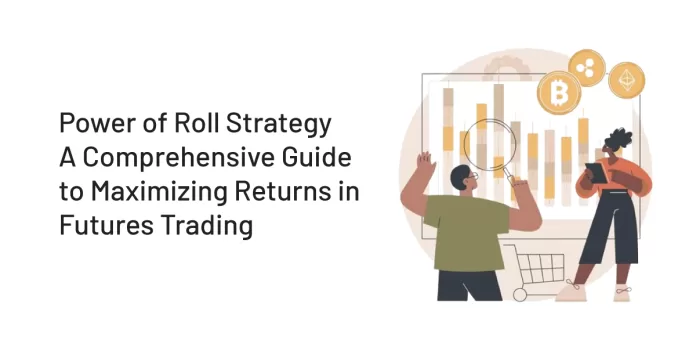In the dynamic world of futures trading, where time is a critical factor, understanding and effectively employing roll strategy can be a game-changer. While commonly associated with commodities, the concept holds significant relevance in single-stock and index futures trading. This guide aims to delve deep into the intricacies of roll strategy, exploring its nuances and offering practical insights for traders seeking to optimize their returns.
Understanding Roll Strategy:
At its core, roll strategy involves the strategic management of futures contracts by closing out positions in near-dated contracts and simultaneously initiating positions in contracts with longer expiries. For instance, if you hold a long position in April Nifty Futures, executing a roll strategy entails closing this position just before expiry and opening a new long position in the May contract.
Significance of Roll Strategy:
Roll strategy comes into play in two key scenarios: Firstly, when a trader’s price target has been met, but they anticipate the underlying trend to persist, and secondly, when the price target has not been achieved yet, but there’s a belief it will in due course. By seamlessly transitioning from one contract to another, traders can effectively extend their exposure to the market, capitalizing on evolving trends.
Sophistication in Roll Strategy:
To fully harness the potential of roll strategy, traders must navigate two crucial choices: futures curve positioning and roll procedure. In financial futures markets, the futures curve typically exhibits an upward slope, indicating that contracts with longer expiries tend to command higher prices. Traders must meticulously analyze this curve and select the contract with the most favorable implied rate, often determined through sophisticated futures valuation models.
Furthermore, the timing of the roll procedure is paramount. When the futures curve slopes upward, transitioning to a new contract incurs a cost, as the price of the new contract exceeds that of the expiring one. This cost consideration necessitates careful consideration of the optimal timing for executing the roll.
Also Read: Trading Calendar Strategies with Futures
Application in Practice:
In practice, traders often implement roll strategy by rolling over Nifty futures from the near-month contract just before expiry to the immediate next-month contract. However, it’s essential to recognize that the effectiveness of this strategy extends beyond mere execution timing. Successful implementation requires a nuanced understanding of market dynamics, coupled with astute decision-making regarding curve positioning and roll procedure.
In conclusion, roll strategy represents a powerful tool in the arsenal of futures traders, offering a systematic approach to managing contracts and maximizing returns. While its roots may lie in commodity markets, its principles are equally applicable in single-stock and index futures trading, providing traders with a competitive edge in navigating evolving market conditions. By mastering the intricacies of roll strategy, traders can unlock new avenues for profitability and gain a distinct advantage in the dynamic world of futures trading.
Read: Option Chain Analysis


